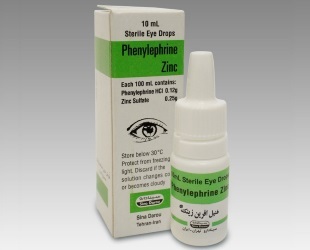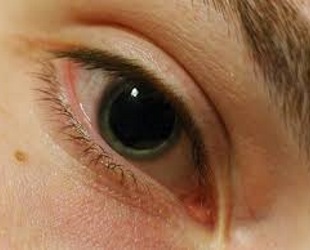
Sometimes there is a need for diagnostic and surgical procedures on the organs of vision.
In order for a doctor to correctly assess the condition of the eye and the fundus, the pupil should be enlarged.
For these purposes, special ophthalmic drops are used, which are called phenylephrine.
In addition, they are used to treat certain eye diseases. Comments on the drops we put in the end of the article.
- 1. Instruction for use
- 2. Conditions and periods of storage
- 3. Price
- 4. Reviews
- 5. Conclusions
- 6. Video
Instruction for use
Indications
There is a huge amount of indications, in the presence of whichprescribe phenylephrine. These include both illnesses and diagnostic and therapeutic interventions.
Here are the most basic of them:
- conducting an ophthalmoscopy;
- provocation for the diagnosis of glaucoma;
- surgical interventions;
- laser microsurgery;
- superficial and deep expansion of the vessels of the eye;
- inflammation of the iris and ciliary body;
- false myopia;
- Posner-Schlossman's syndrome.
The video shows how the ophthalmoscopy is carried out:
Dosage and Administration

The drug is applied by instillation into the conjunctival sac. It is advisable to avoid touching the bottle with a variety of surfaces, as this leads to contamination and the risk of infection of the eye.
The dosage of the drug depends on the indications for which it is prescribed.
If it is necessary to dilate the pupil, drop one drop of phenylephrine. The maximum effect is achieved in half an hour after instillation and remains so for 90 minutes.
For the treatment of false myopia, the drug is prescribed 1 drop per day.
For conducting provocative tests in patients with suspected glaucoma, the drug is applied 1 drop once.
In the treatment of Posner-Schlossman's syndrome Phenylephrine is instilled three times a day at equal intervals.
When inflammation of the iris and ciliary body, the agent is administered 2 times a day, one drop.
Form and Composition
| Form | Phenylephrine is produced as a cloudy, yellowish solution. The solution is poured into polyurethane bottles with a dispenser, which in turn are packed in cardboard boxes |
| Active substance | Phenylephrine - belongs to the group of allenomimetics and mydriatic. With local use, it exerts a pronounced vasoconstrictive, mydriatic and hypotonic action. Pheniaffrin can also have a systemic effect: it narrows the arterioles and has a hypertensive effect |
| Additional components |
|
Drug Interactions
The combination of phenylephrine and atropine potentiates the effect of atropine. It is also likely that heart palpitations increase.
Simultaneous use of phenylephrine and monoamine oxidase inhibitors leads to the development of malignant arterial hypertension.
Beta-blockers in combination with phenylephrine can also cause an uncontrolled rise in blood pressure to extremely high digits.
Drugs used in general anesthesia can cause oppression of the cardiovascular system if Feniaphrin was used 72 hours before the anesthesia.

Side effects
With the use of phenylephrine, unwanted reactions often develop. Most of them are transient in nature, but ophthalmologist control is necessary.
Most often on the instillation of phenylephrine react to the organs of vision. Possible:

- edema;
- burning sensation;
- resi;
- decreased visual acuity;
- enhanced lacrimation;
- intraocular hypertension;
- sensation of foreign body ;
- appearance of pigment suspension.
In some cases, systemic side effects are possible.
From the heart and blood vessels may occur:
- heart palpitations;
- arrhythmia;
- extrasystoles;
- bradycardia;
- infarction;
- acute violation of cerebral circulation;
- pulmonary embolism.
Skin reactions in the form of pruritus, urticaria, erythema, and Quincke's edema are not excluded.
Contraindications
Phenylephrine is contraindicated in the following conditions:
- violation of the integrity of the eye;
- old age( over 75 years);
- thyroid disease with hyperfunction;
- age to 6 years;
- intolerance to any component of the drug;
- porphyria;
- aneurysm.
Relative contraindications requiring close monitoring by a physician:
- renal dysfunction;
- abnormal liver function;
- sickle cell anemia;
- prolonged use of contact lenses.
In pregnancy
No special studies have been conducted on the effects of phenylephrine on pregnant women and fetuses. It is not known whether Phenylephrine can penetrate the placenta and show up in breast milk.
Use of Phenyphrine during pregnancy and lactation is only possible with the permission of a doctor.
Storage conditions and storage times

Store the product in a dark place at room temperature. Frozen phenylephrine is inadmissible.
The shelf life of the drug is 24 months. After opening the bottle, the medicine should be used within 30 days.
Price
Average price in Russia
One bottle of phenylephrine costs about 400 rubles. The minimum price is 350 rubles, and the maximum price is 450.
The average price in Ukraine
In Ukraine Phenylephrine is not for sale, but you can buy the following analogs:
- Mesatone( price - 35 hryvnia),
- Neosinetrene-Pos( price - 257 hryvnia),
- Irifrin( price - 400 hryvnia).
Reviews
Patients who left feedback on Phenylephrine on the network say that he does his job well.
Relatively high cost and discomfort after instillation are the main disadvantages mentioned by patients.
Conclusions
- Phenylephrine is an ophthalmic agent used for a large range of states.
- Phenylephrine belongs to the group of adrenomimetics and mydriatic.
- Sometimes, with the use of phenylephrine, unwanted side reactions occur.
- Phenylephrine should only be used as directed by a doctor.
Video
Did you know that?
